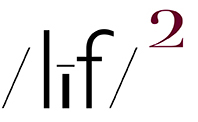A SOMEWHAT STRANGE THING HAPPENED yesterday, after making a picture of wilted flowers in a vase using the iPhone PORTRAIT setting, I opened the file for processing and, seemingly for the first time-actually most probably the second time-I noticed that the picture look very good as shot. That is, as an iPhone "full-frame" picture.
To clarify, when using the PORTRAIT picture making setting on the iPhone, there is no setting for the square picture format-as there is when using the PHOTO setting-so you end up with an uncropped-to-square, full-frame image file. Consequently, my standard processing procedure is to open such a file and, without even considering it as full-frame picture, I immediately crop to the square format. An almost Pavlovian, don't even-think-about-it response, aka: square, it's what I do.
In any event, yesterday, the seed was planted in my head as I was making the picture that, due to the way it looked in the iPhone screen, it looked damn good as a full-frame picture. So, upon openning it for processing, I did pay attention to its full-frame possibility. And, I liked it. Which lead to...
... my wondering how many PORTRAiT setting image files I might have let slip through the processing procedure without considering or even noticing their full-frame possibilities.
After combing through my un-processed image file library, for my original un-cropped, un-processed PORTRAIT image files-only 2 of which were actual portraits-I now know the answer to that question...25 image files.
That came as quite a surprise cuz, when making a picture with the PORTRAIT setting, I first compose the picture with the PHOTO setting set to square. Then I switch to PORTRAIT and, without considering the on-screen, full-frame image, I make the picture. The surprise was the result of the fact that most of the un-cropped image files worked really well as full-frame pictures without my paying any attention at all to that possibility at the moment those pictures were made.
To be certain, I do not think that the full-frame picture variants are any better (or worse) than their square variant counterparts. iMo, and to my eye and sensibilities, they are just different.
All of the above written, stay tuned for my next entry when I with attempt to explain why I have been a fan of narrow DOF since nearly the beginning of my picture making life. And, why I will be more frequently using the iPhone PORTRAIT setting-did I mention how much I really like the ability to adjust, for all time, the amount of DOF in a picture after its making?-in my future picture making.

